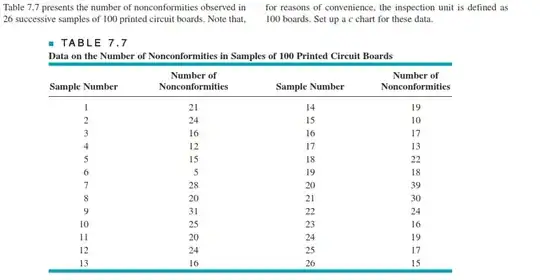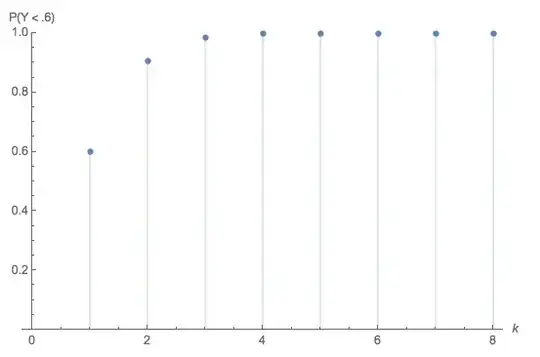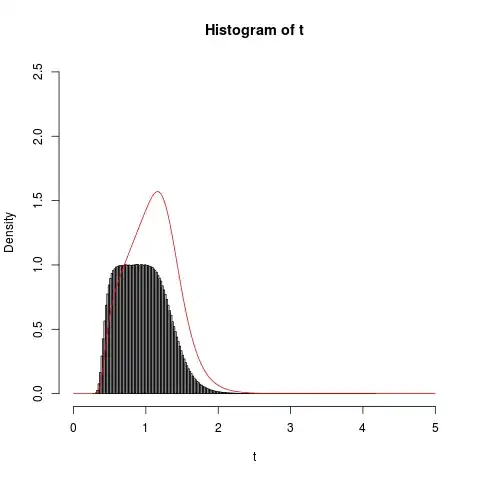I'm cross-posting this from math.SE because it's not getting any love over there. However, if that's considered heresy, I can delete the posting over there.
The Statement of the Problem:
Let $ \{ U_i \}$ be a set (sequence?) of iid random variables such that $U_i \sim \text{Uniform}(0,1)$, and define
$$ N(a) = \min \left\{k: \prod_{i = 1}^{k}U_i \lt .6\right\}. $$
Find the distribution of $N$.
SOLUTION
Recall that $-\log (U) \sim \text{Expo}(1)$. From this, it follows that
$$N(a) = \min \left\{k: \prod_{i = 1}^{k}U_i \lt .6\right\} = \min \left\{k: \sum_{i = 1}^{k} \left[ - \log ( U_i ) \right] \gt \log \left( \frac{5}{3} \right) \right\} = \min \left\{k: S_k \gt \log \left( \frac{5}{3} \right) \right\} $$
where $S_k$ is the arrival time of the $k$th event of a Poisson process with rate $\lambda = 1$. I understand all of this. Beyond this point is where I get confused...
Now, it follows (apparently) that the smallest $k$ such that $S_k \gt \log \left( \frac{5}{3} \right)$ is
$$ N\left( \log \left[ \frac{5}{3} \right] \right) + 1 \qquad (*) $$
which is distributed as $\text{Poisson}{ \left( \log \frac{5}{3} \right) } + 1$.
I'm not sure what is meant by this sort of "superscript" parameter here (I'm transcribing this from handwritten notes). As far as I can tell, it's just a normal ol' parameter. Anyway, I have no idea where the result $(*)$ comes from, and have been racking my brain here trying to figure it out. Any assistance would be appreciated.



